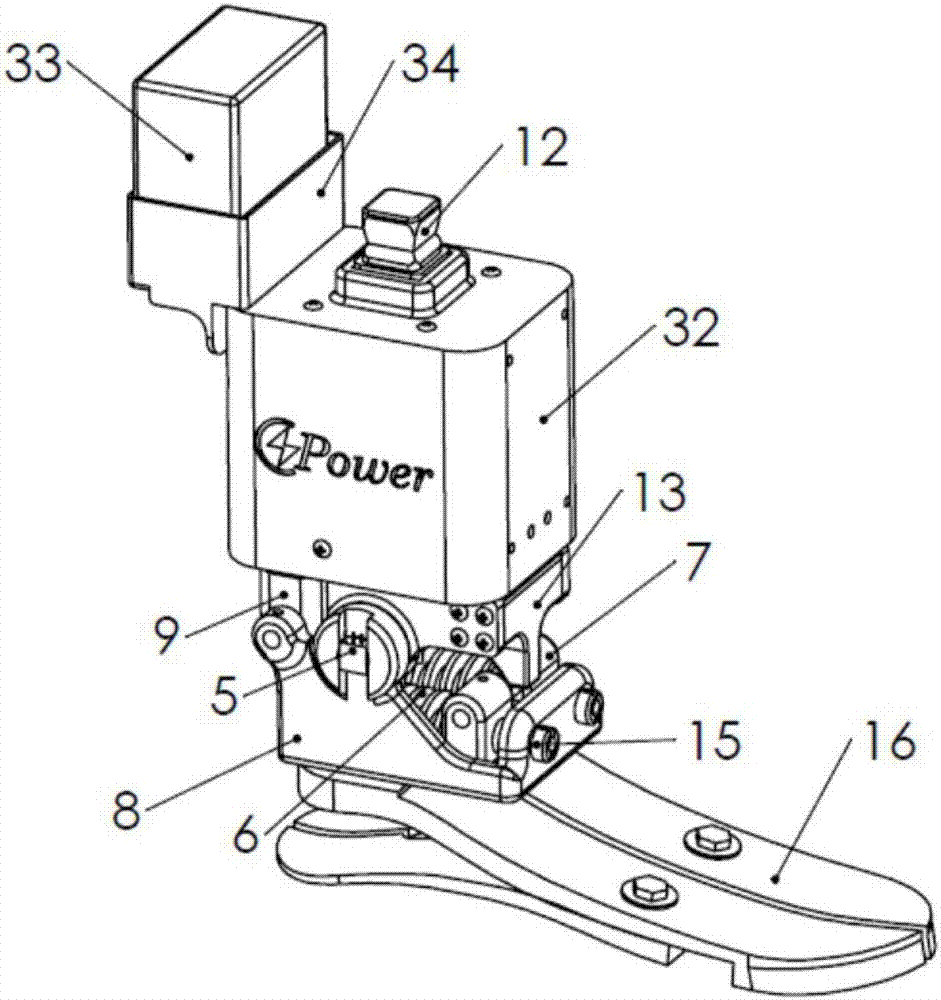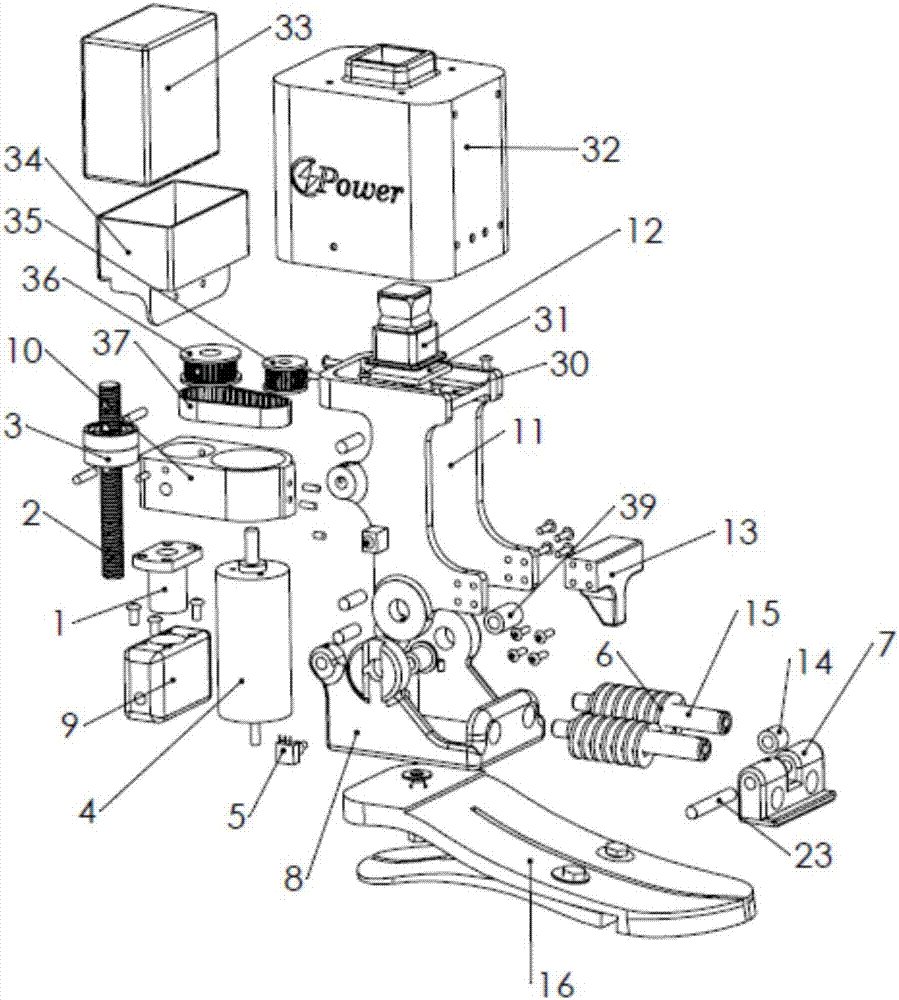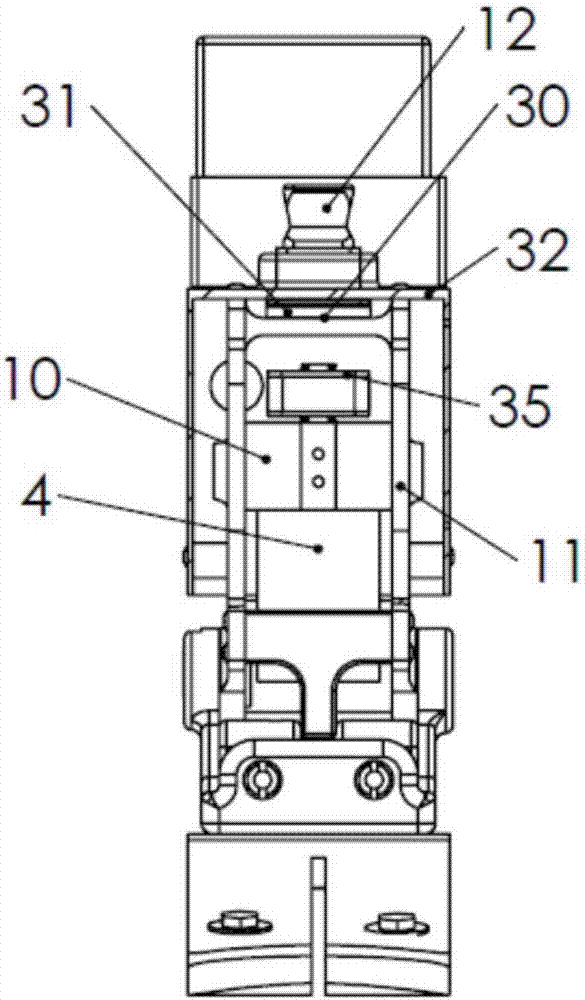Ankle-foot prosthesis device
一种动力型、假肢的技术,应用在假体、医药科学、人造腿等方向,能够解决电池无法假肢供应充足等问题,达到降低力矩和功率要求、降低能耗、缩小电机和电池尺寸的效果
- Summary
- Abstract
- Description
- Claims
- Application Information
AI Technical Summary
Problems solved by technology
Method used
Image
Examples
Embodiment Construction
[0022] Embodiments of the present invention relate to powered ankle-foot prostheses employing elastic components and actuators. The invention is described in detail with reference to the drawings; like reference numerals are used to designate like elements.
[0023] Figure 1 to Figure 4 It is a specific embodiment of the ankle-foot prosthesis proposed by the present invention. The elastic foot 16 is used to reduce the impact force during the heel strike. The elastic feet 16 may be implemented as carbon fiber feet, or any suitable material with sufficient strength and elasticity. As described herein, elastic feet refer to any type of shock absorbing foot that may utilize various features or mechanisms (eg, elastomers, spring mechanisms, elastic blades, pistons, etc.). The ankle-foot prosthesis includes a foot mount 20 for attaching the elastic foot 16 . Foot mount 20 may include a flat surface with threaded holes. The fastening bolt 21 connects the shock-absorbing foot 16...
PUM
 Login to View More
Login to View More Abstract
Description
Claims
Application Information
 Login to View More
Login to View More - R&D
- Intellectual Property
- Life Sciences
- Materials
- Tech Scout
- Unparalleled Data Quality
- Higher Quality Content
- 60% Fewer Hallucinations
Browse by: Latest US Patents, China's latest patents, Technical Efficacy Thesaurus, Application Domain, Technology Topic, Popular Technical Reports.
© 2025 PatSnap. All rights reserved.Legal|Privacy policy|Modern Slavery Act Transparency Statement|Sitemap|About US| Contact US: help@patsnap.com



